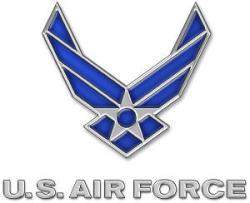Retired General Says That's A Major Issue
On Friday, Boeing once again said the US Air Force's decision to
award a contract for the next aerial refueling airplane to the team
of Northrop Grumman and the European Aeronautic Defence and Space
Company (EADS) is at odds with the service's own standards. In the
issue of combat survivability, Boeing notes the Northrop/EADS
team's KC-30 was determined to be more vulnerable to attack than
the Boeing KC-767.

According to the planemaker, the Air Force evaluation found the
KC-767 had almost five times as many survivability discriminators
as its competitor.
Speaking this week at the Aerial Refueling Systems Advisory
Group (ARSAG) Conference in Orlando, FL, former US Air Force Chief
of Staff and retired Gen. Ronald Fogleman stressed that
survivability greatly enhances the operational utility of a
tanker.
 "When
I saw the Air Force's assessment of both candidate aircraft in the
survivability area, I was struck by the fact that they clearly saw
the KC-767 as a more survivable tanker," Fogleman told the ARSAG
audience in his role as a consultant to Boeing's tanker effort. "To
be survivable, tanker aircraft must contain systems to identify and
defeat threats, provide improved situational awareness to the
aircrew to avoid threat areas, and protect the crew in the event of
attack. The KC-767 has a superior survivability rating and will
have greater operational utility to the joint commander and provide
better protection to aircrews that must face real-world
threats."
"When
I saw the Air Force's assessment of both candidate aircraft in the
survivability area, I was struck by the fact that they clearly saw
the KC-767 as a more survivable tanker," Fogleman told the ARSAG
audience in his role as a consultant to Boeing's tanker effort. "To
be survivable, tanker aircraft must contain systems to identify and
defeat threats, provide improved situational awareness to the
aircrew to avoid threat areas, and protect the crew in the event of
attack. The KC-767 has a superior survivability rating and will
have greater operational utility to the joint commander and provide
better protection to aircrews that must face real-world
threats."
As ANN reported, on February
29 the Air Force selected Northrop/EADS' Airbus A330 derivative
over Boeing's 767 derivative. Boeing subsequently asked the
Government Accountability Office to review the decision, citing
numerous irregularities and a flawed process that included
deviations from the evaluation and award criteria established by
the service for the competition.
During the Air Force debrief, the Boeing team discovered the
KC-767 outranked the KC-30 in the critical survivability category.
According to Boeing, the KC-767 achieved a total score of 24
positive discriminators -- including 11 described as major -- while
the KC-30 scored five, none of which were major.
Major survivability discriminators cited by Boeing for
the KC-767 included:
- More robust surface-to-air missile defense systems
- Cockpit displays that improve situational awareness to enable
flight crews to better see and assess the threat environment
- Better Electro-Magnetic Pulse (EMP) hardening -- the KC-767 is
better able to operate in an EMP environment compared with the
KC-30
- Automatic route planning/rerouting and steering cues to the
flight crew to avoid threats once they are detected
- Better armor-protection features for the flight crew and
critical aircraft systems
- Better fuel-tank-explosion protection features.

Boeing says its KC-767 will be equipped with the latest and most
reliable integrated defensive equipment to protect the aircraft and
crew by avoiding, defeating or surviving threats, resulting in
unprecedented tanker survivability -- far superior to all current
Air Force tankers, as well as the Northrop/EADS KC-30.
 ANN's Daily Aero-Linx (05.02.24)
ANN's Daily Aero-Linx (05.02.24) ANN's Daily Aero-Term (05.02.24): Touchdown Zone Lighting
ANN's Daily Aero-Term (05.02.24): Touchdown Zone Lighting Aero-News: Quote of the Day (05.02.24)
Aero-News: Quote of the Day (05.02.24) ANN FAQ: Contributing To Aero-TV
ANN FAQ: Contributing To Aero-TV NTSB Final Report: Cirrus Design Corp SR20
NTSB Final Report: Cirrus Design Corp SR20





